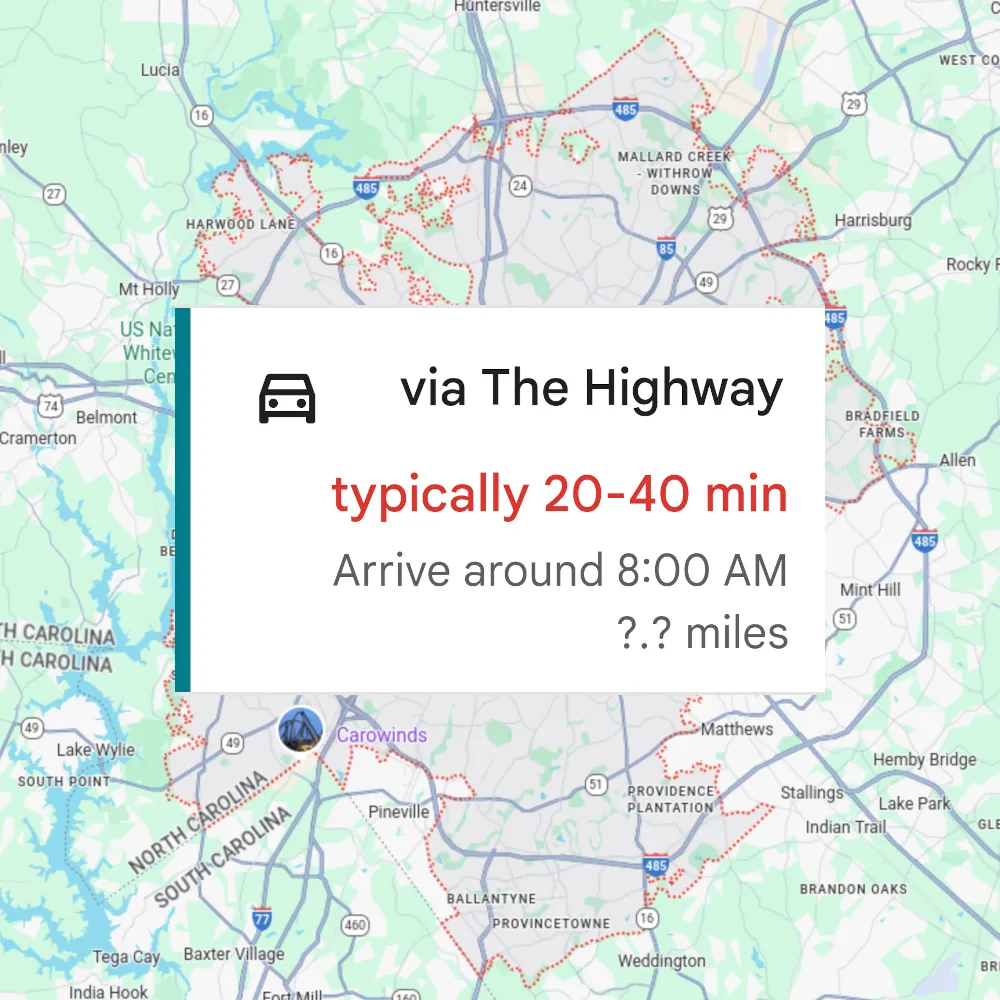Let’s get one thing out of the way first, there are obviously some benefits to in-person work even when remote work is possible. It can foster better team collaboration, lessen communication errors, improve networking and job advancement for junior team members, etc.
That said, let’s set these factors aside for now and focus solely on the added time commitments faced by employees.
How much time does work really take out of a day?#
Often, people naturally think of the standard workday as neatly packed into an eight-hour block of time. After all, that is precisely how long you are “supposed” to spend on the work itself.
However, lets consider the actual overhead surrounding the typical full-time American office job. For the most part, the numbers below are derived from the U.S. Bureau of Labor Statistics’ 2022 American Time Use Survey.
| Task | Time (in-person work) | Time (remote work) |
|---|---|---|
| Morning routine/prep1 | 30 - 60 minutes | 15 - 30 minutes |
| Commute to work2 | 30 - 60 minutes | - |
| Work before lunch | 4 hours | 4 hours |
| Lunch (non-leisure)3 | 1 hour | 30 minutes |
| Lunch (leisure) | - | 30 minutes |
| Work after lunch | 4 hours | 4 hours |
| Commute home | 30 - 60 minutes | - |
| Total work obligations | ~11.25 hours | ~8.875 hours |
| Chores / evening routine | 2 hours | 2 hours |
| Total free time | ~2.75 hours | ~5.125 hours |
Indeed, these findings closely mirror the BLS’s estimate that the average full-time worker has around 3 hours of free time on weekdays.
Notably, “total work obligations” here refers to everything mandatory for work, including time preparing for the workday, commuting to and from the office, and during breaks where employees are restricted to areas in or relatively near the workplace. In other words, it is everything other than time spent on personal activities, chores, or leisure.
What’s the impact on effective wages and work-life balance?#
From this perspective, compared to fully remote work,
- Fully in-office work is effectively
- A ~21% pay cut,
- A ~46% loss in weekday leisure time, and a ~32% loss in overall leisure time4
- So-called “hybrid” work with two remote days per week is effectively
- A ~14% pay cut,
- A ~28% loss in weekday leisure time, and a ~19% loss in overall leisure time
This should align with most people’s intuition, particularly given that a significant portion of Americans would be willing to accept a pay cut of up to 20% for the chance to work remotely. For example, see these articles from CBS News, Business Insider, and Fortune.
I would also wager this is a predominant factor in many office workers arriving late, leaving early, or otherwise finding ways to avoid the office. Unless there is a clear, overwhelming benefit to them or their work, there is very little incentive to spend nearly 2.5 hours of extra overhead in their day just to get the same amount of work done.
In fact, one could easily paint a worse picture from the employee’s perspective. For instance, in-person work adds significant expenses for transportation, work attire, and meals. An office atmosphere also presents numerous distractions and fewer opportunities for focused, uninterrupted work.
Unless corporations can address those concerns head-on and honestly communicate with their workforce, they are likely to face an incredible uphill battle indeed. And if they were to blindly push things forward, their most effective (and thus in-demand) workers would be the first to leave for other, more progressive opportunities.
See also and references#
- Feel free to explore the various articles and resources linked throughout the post itself.
- The extra details in “Tables of Hybrid Work’s Impact on Effective Pay and Free Time”.
- Talk to any office worker! The range of opinions on this sort of topic varies wildly, but practically anyone should be able to tell you interesting stories. Employees doing the bare minimum to check a box in some report, circumventing tracking measures, corporate leaders sending out wildly inconsistent or tone-deaf communications to huge mailing lists, massive expectation differences from generational divides, etc.
This includes everything between waking up and leaving for work (eating, showering, shaving, etc.). There is not an exact equivalent for this in the American Time Use Survey, but this range is comparable the survey’s averages for various personal care and eating activities, accounting for three meals in the day and most personal care being split between morning and evening routines. The 50% reduction in time for remote workers across several categories is more arbitrary, but appears consistent with general online consensus. ↩︎
This is slightly longer than the average American commute time to approximate a door-to-door estimate rather than travel time alone. Again, this seems to be consistent with online consensus regarding office workers typically having longer commutes than the average American and the time required to walk to/from parking near the office. ↩︎
Here, I’m considering a lunch break for remote workers to potentially allow for chores and/or general leisure. On the other hand, office workers do not have this privilege and must generally remain in or close to their place of work to accommodate normal business hours and operations. ↩︎
This overall loss in leisure time is slightly less than just taking 5/7th of the weekday loss because the average full-time worker has ~6 hours of daily leisure time on weekends. ↩︎


